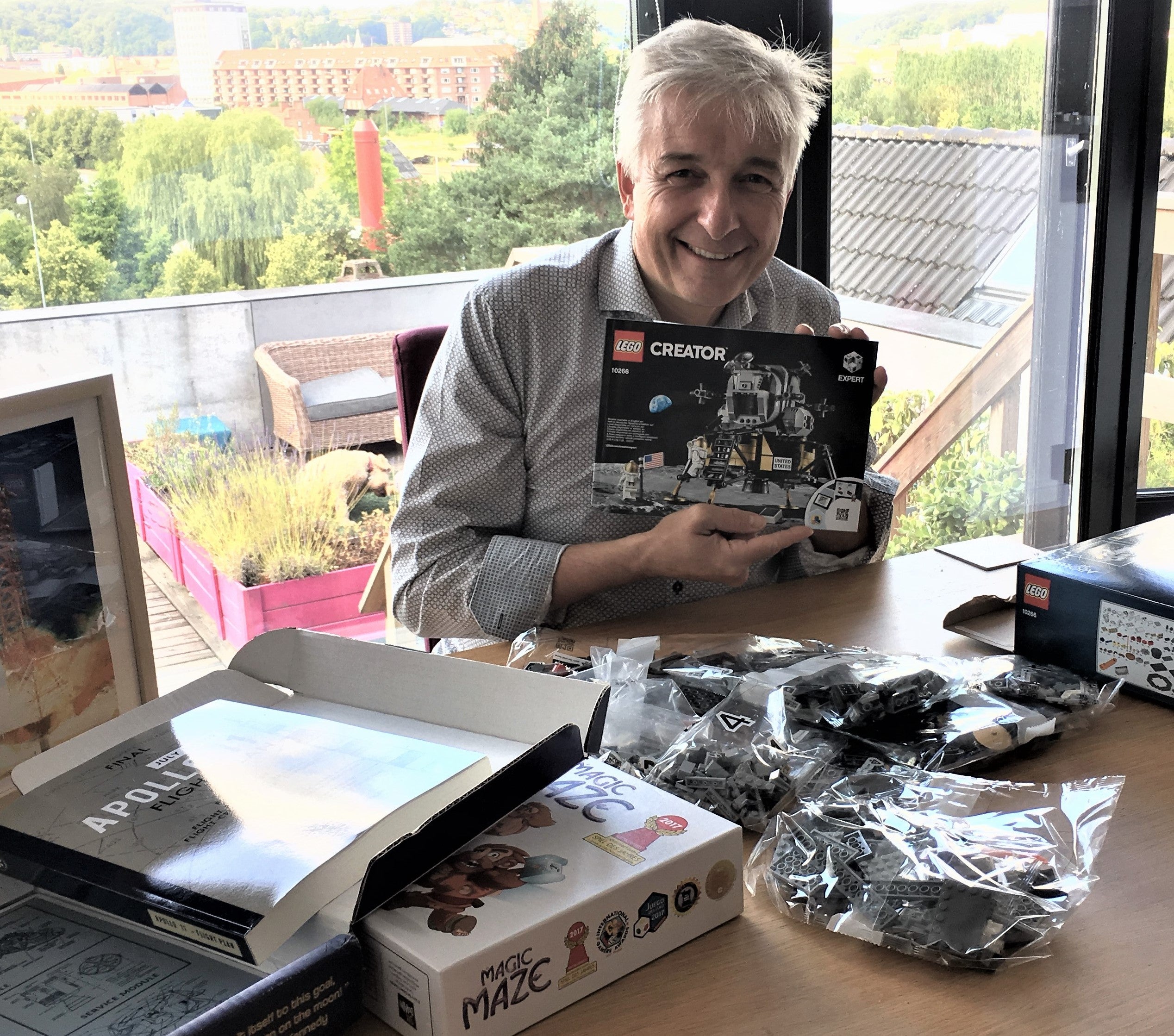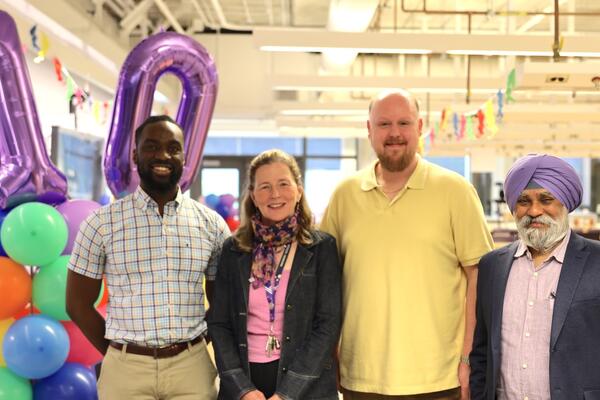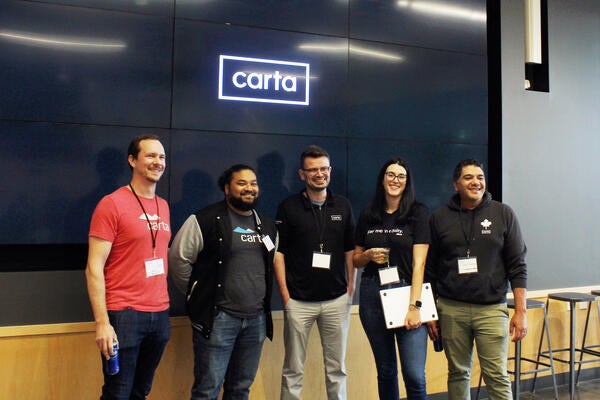
Building imaginations one brick at a time
Alumnus sparks creativity as a firmware architect at the LEGO Group in Denmark

Alumnus sparks creativity as a firmware architect at the LEGO Group in Denmark
By Carol Truemner Faculty of EngineeringRalph Hempel’s beloved hobby as a child has turned into his dream career as an adult.
The 1986 electrical engineering alumnus who spent countless hours playing with LEGO growing up is now employed by the popular building toy company’s home office in Billund, Denmark.
As the LEGO Group’s senior firmware architect, he puts to use his over 25 years of experience in designing, debugging and delivering complex embedded systems.
Although Hempel took a break from his hobby as a teenager, he returned to it in his early 30s when he and his wife Christine Hempel, a 1991 School of Architecture graduate, started a family.
Hempel shared his love of LEGO bricks with his three sons, two of whom are now engineers – one a graduate of Waterloo’s mechanical engineering program – and one who is a surgeon.
program – and one who is a surgeon.
For many years, Hempel designed firmware for fire alarm systems, first with General Electric (GE), followed by Mircom, and then with UTC, which purchased GE’s fire and safety division in 2010.
Ralph Hempel received a LEGO Creator kit for a recent birthday.
Living in Owen Sound, Ontario at the time, Hempel was part of a hobbyist group that discussed all things LEGO, including making their own controllers.
Intrigued by the yellow LEGO MINDSTORMS RCX (Robotic Command eXplorer) brick the company introduced in 1998, group members hacked into its firmware.
When the LEGO Group noticed what the members had done, the company invited them to attend Massachusetts Institute of Technology’s Mindfest described by Hempel as an engineering futurism conference.
“There, we were able to explain how we hacked into the brick, which wasn’t very hard,” he says. “The fun thing was when we showed the engineers at the LEGO Group the reversed engineered source code they said, ‘It’s better than what we have, and you just did it backwards.’”
Keeping in touch over the years with LEGO Group engineers, Hempel was offered a job with the company in 2016 to lead its firmware development team that had recently become its own department.
Moving from Owen Sound to Denmark was a big move, but one he and Christine, an urban designer, have embraced. 
The highlight of Hempel’s time with the company has been creating the fourth generation of LEGO MINDSTORMS, remote-controlled robots that can be programmed in Python or Scratch, a programming language targeted to eight to 16 year olds.
Ralph and Christine Hempel on a Dolomitic Alps hiking trip.
Along with others on a LEGO Group team, Hempel holds a patent for the design of the hub element used in the LEGO Education Spike Prime and LEGO MINDSTORMS sets.
“We went back to the core of the original LEGO RCX, which was easy to build and has a more inclusive design,” he says. “Now we have a lot more girls and younger kids playing with it and not being intimidated by the shape of the element.”
The LEGO sets Hempel has kept for decades are still compatible with the latest models.
“It all goes back to the modular design on the LEGO System In Play that is in the DNA of every brick,” he says. “I have elements in my collection that are over 50 years old and work exactly as they should with today’s elements.”
Throughout most of high school, Hempel, who was born in Germany, planned to move back to the country and apprentice as a tool and die maker like his father had done.
But after his uncle visiting from Germany suggested he consider pursuing an electrical engineering education, Hempel applied to programs at three different universities and was accepted into all of them. Waterloo’s co-op program was the deciding factor for him.
Looking back at his time at Waterloo, it was the electrical engineering program's focus on basic engineering skills that has stuck with Hempel.
“I’ll always be grateful for that,” he says.
The secret to Hempel’s career satisfaction over the years is having a job he loves.
“It’s like the phrase says, ‘If you do what you love, you'll never work a day in your life,’” he explains. “I love embedded systems and I have loved playing with LEGO bricks ever since I was a kid.”
Main photo is of Ralph Hempel on his first day with the LEGO Group in Denmark

Read more
Here are the people and events behind some of this year’s most compelling Waterloo stories

Read more
The Pearl Sullivan Engineering IDEAs Clinic marks a decade of delivering experiential learning embedded in the real world and mentored by industry professionals

Read more
From AI-powered cap tables to complex valuation tools, Waterloo co-op students drive Carta’s innovation while shaping its engineering talent strategy
The University of Waterloo acknowledges that much of our work takes place on the traditional territory of the Neutral, Anishinaabeg, and Haudenosaunee peoples. Our main campus is situated on the Haldimand Tract, the land granted to the Six Nations that includes six miles on each side of the Grand River. Our active work toward reconciliation takes place across our campuses through research, learning, teaching, and community building, and is co-ordinated within the Office of Indigenous Relations.